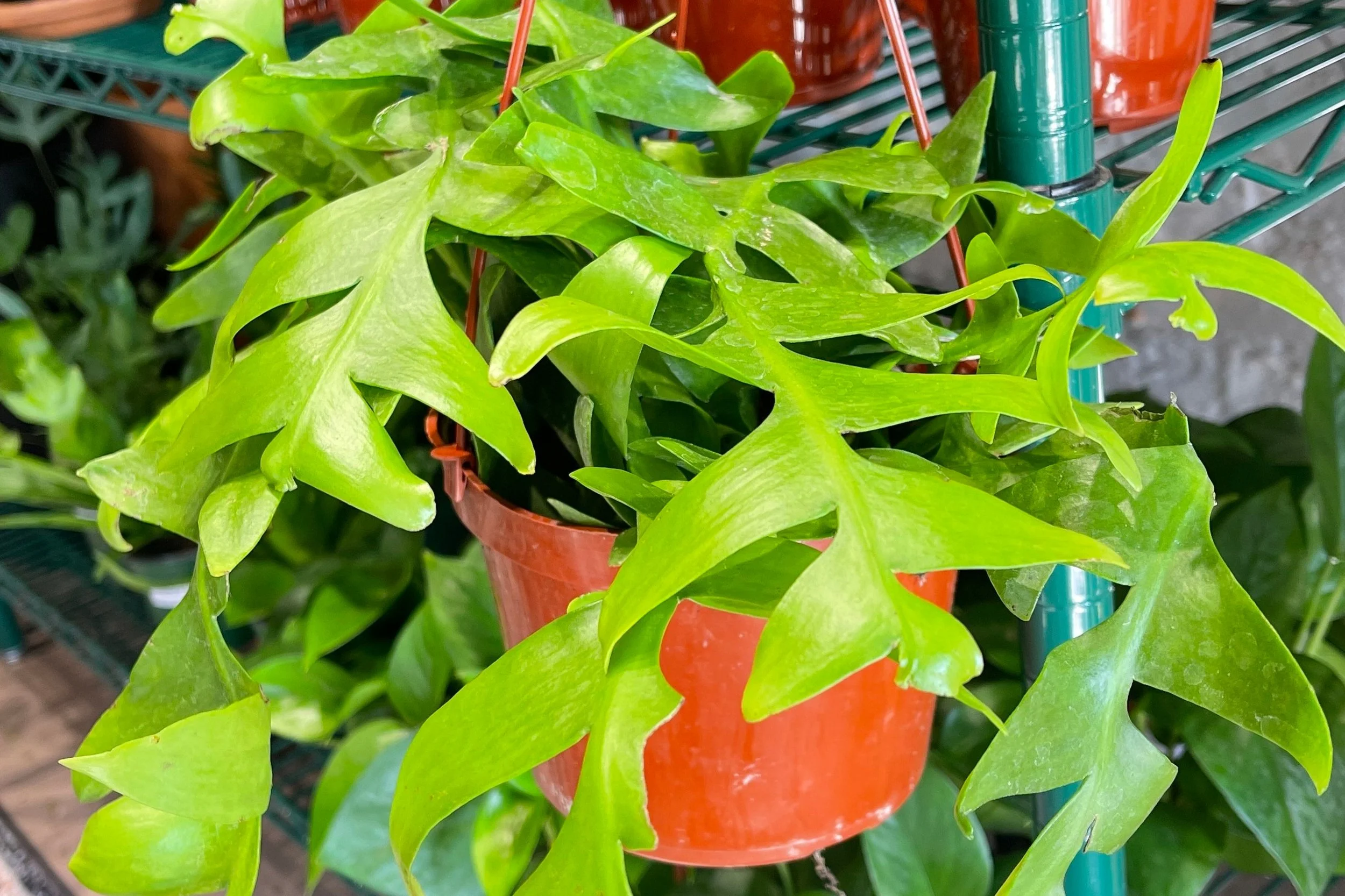Shark Tooth Fern Care Guide
Family: Cactaceae
Genus: Selenicereus
Botanical Name: Selenicereus chrysocardium
Difficulty: Great for beginners
If you love the cascading fronds of a fern but run for the hills to avoid them, you can rest easy with the Shark Tooth Fern. They are low-maintenance, low light tolerant and are beautiful as hanging plants or in a regular pot! Keep reading to learn more about what your Shark Tooth Fern needs from you!
Light
Your Shark Tooth Fern will be happiest in bright, indirect sunlight. They’re found below the canopies of forests, so they’re more used to filtered sunlight. Keep them in an area that gets sunshine in the morning and indirect sunlight for the rest of the day. Direct sunlight is a big no for these guys.
Water
Remember that your Shark Tooth Fern is actually a type of cactus, so they do not like to be over watered. You don’t want to let the soil dry out too much, so you should water once the topsoil has dried. When watering, make sure water comes from all drainage holes to ensure it’s getting to all the roots.
Climate
Shark Tooth Ferns are not cold hardy at all! They love temperatures above 55°F combined with average household humidity levels. They love a little added humidity, but they don’t require it!
Soil
Soil choice is very important when it comes to any member of the Cactaceae family. They need a well-draining soil that is not going to hold any excess moisture. If you’re worried that your soil isn’t going to cut it for your Shark Tooth Fern, try a cactus and succulent soil or a mixture of 60% regular potting mix with 40% perlite, peat, or gravel.
Pests & Diseases
Shark Tooth Ferns don’t typically attract pests or have many problems, but you should always be wary of fungus gnats, spider mites, scale, and aphids that may try to find a home on your plant. Whenever you water your plants, take an extra few minutes to check for pests and save yourself a lot of trouble later.
Tips
Give them plenty of space to let those beautiful stems take up all the room they want!
Keep them in an area that’s more on the shady side.
They enjoy a gentle fertilizer once a month during the growing season.
Signs your plant is unhappy
Yellow leaves: too much sun
Black spots on edges of leaves:
Mushy leaves: over watered
Fungus gnats: over watered, soil is too wet without proper drainage.
Propagation
You have a few options when propagating your Shark Tooth Fern. They’re fairly easy to root in a well-draining potting soil mixed with perlite or coarse sand, so let’s talk about how to do that.
Start by taking cutting about 6 inches down a stem, and cut where there is a natural gap. Lay the cutting flat and leave it over night so the end can form a callus. Once the cutting is ready, prepare a pot with a very well-draining potting mixture and pre-water the soil. Place your cutting in the center of the soil. Leave it in a moist and humid environment and wait for it to establish a root system! Before assuming it’s ready, give the stem a gentle tug. If you feel some resistance, it has a root system, and you should start to see new growth!
Fun Facts
Shark Tooth Ferns are native to New Mexico.
They’re naturally epiphytic.
They’re very fast growing and can get up to 6 feet wide.
Hardiness Zones
Shark Tooth Ferns are not cold tolerant, so be careful if you want them to live outside. Always check your area’s hardiness zone to make sure your plant can survive outside! In some areas you may have to overwinter your plant once temperatures begin to drop. If you live in Tennessee, check out the hardiness map below!
The USDA Hardiness zones for Shark Tooth Ferns are 10a-11b.


